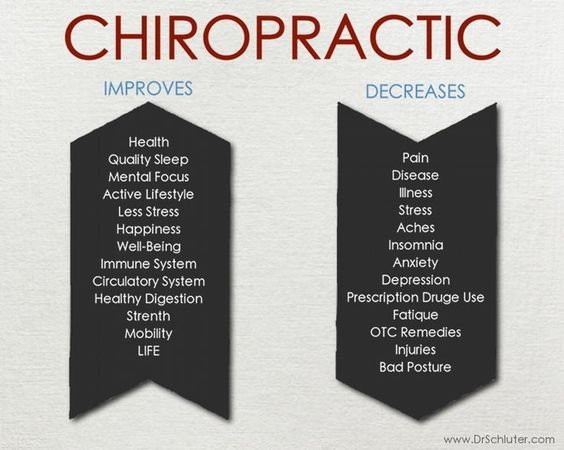Check Out The Remarkable Benefits Of Acupuncture As We Examine It Alongside Conventional Discomfort Administration Approaches You May Currently Identify. What Revelations Could Await You?
Check Out The Remarkable Benefits Of Acupuncture As We Examine It Alongside Conventional Discomfort Administration Approaches You May Currently Identify. What Revelations Could Await You?
Blog Article
Content Create By-Perkins Oddershede
When you consider discomfort monitoring choices, you may find yourself evaluating the pros and cons of various methods, consisting of acupuncture, over-the-counter medicines, and physical therapy. While many techniques provide alleviation, they commonly come with their very own set of challenges, like adverse effects or prolonged treatment times. Acupuncture attracts attention for its one-of-a-kind capacity to promote self-regulation with less dangers. But exactly how does its performance contrast to more standard methods? The nuances of these methods can considerably impact your options, and exploring them even more might result in surprising insights.
Overview of Discomfort Monitoring Techniques
When it comes to taking care of discomfort, you have a range of techniques at hand. These techniques can range from standard methods to more alternative treatments. Comprehending your alternatives is important in locating what works finest for you.
One usual method is over-the-counter medications like ibuprofen or acetaminophen, which can give quick relief for light to modest discomfort. Prescription medications, consisting of opioids, may be necessary for much more extreme pain, though they feature dangers of dependency and negative effects.
Physical therapy is one more efficient method, focusing on exercises and stretches to strengthen muscle mass and improve wheelchair. This technique frequently aids in managing persistent discomfort problems.
In addition, some individuals turn to more all natural choices, such as massage treatment, which can alleviate tension and boost flow.
Mind-body methods, like mindfulness meditation or yoga exercise, assist you take care of pain by lowering stress and anxiety and improving your mental strength.
Last but not least, way of living changes, such as preserving a healthy diet regimen and normal exercise, can play an essential function in total discomfort administration. Each method has its advantages and disadvantages, so it's necessary to discover what suits your demands and preferences best.
Perks of Acupuncture
Acupuncture uses a special technique to pain management that sticks out among different strategies. By targeting specific factors on your body, it stimulates the flow of energy, or "qi," promoting all-natural healing and minimizing discomfort.
One of the most significant advantages is its marginal side effects. Unlike some medicines, which can bring about dependence or unwanted wellness issues, acupuncture is a holistic therapy that motivates your body's self-regulation.
You'll likely find that acupuncture sessions can aid eliminate chronic discomfort, headaches, and also tension. Many individuals experience a sense of relaxation and wellness throughout and after therapy, which can improve general lifestyle.
And also, it's a flexible alternative; it can be used alongside other therapies, making it a great complement to your existing pain administration strategy.
An additional considerable advantage is that acupuncture can be tailored to your particular needs. Your practitioner will certainly assess your condition and establish a customized treatment strategy, guaranteeing you receive the treatment that finest sustains your recovery.
With its old roots and growing approval in modern-day medicine, acupuncture sticks out as an engaging option for discomfort relief.
Contrasting Performance and Outcomes
Discomfort administration techniques vary widely in their performance and results, making it vital to comprehend exactly how they compare to each other. When thinking about options like acupuncture, physical treatment, and medicine, you'll discover distinctive distinctions in exactly how each approach addresses discomfort.
Acupuncture, for example, frequently offers alleviation for chronic discomfort conditions, with researches showing significant renovations hurting levels for several individuals.
In contrast, medications like opioids can effectively handle acute pain yet bring threats of dependency and adverse effects.
https://edwinqlfat.livebloggs.com/39420127/how-commonly-should-you-see-a-chiropractic-doctor-for-pain-in-the-back on rehabilitation and may take longer to show results, which can be annoying if you require immediate alleviation.
When evaluating these strategies, think about your details discomfort kind and your individual health and wellness objectives. Some individuals find that a mix of methods functions finest for them.
As an example, you might take advantage of acupuncture sessions alongside physical treatment to make the most of recuperation.
Inevitably, comprehending the effectiveness and end results of each method will assist you make notified decisions regarding your pain administration strategy, allowing you to select the strategy that finest fits your needs and way of life.
Verdict
In summary, acupuncture sticks out as a useful option to traditional discomfort management approaches. It supplies quick alleviation and fosters self-regulation without the dangers of reliance related to medicines. While physical therapy may require even more time for outcomes, acupuncture can give prompt advantages, making it an enticing alternative for those seeking remedy for chronic pain and anxiety. By incorporating acupuncture right into your pain management strategy, you can improve your total health and redeem control over your health and wellness.
